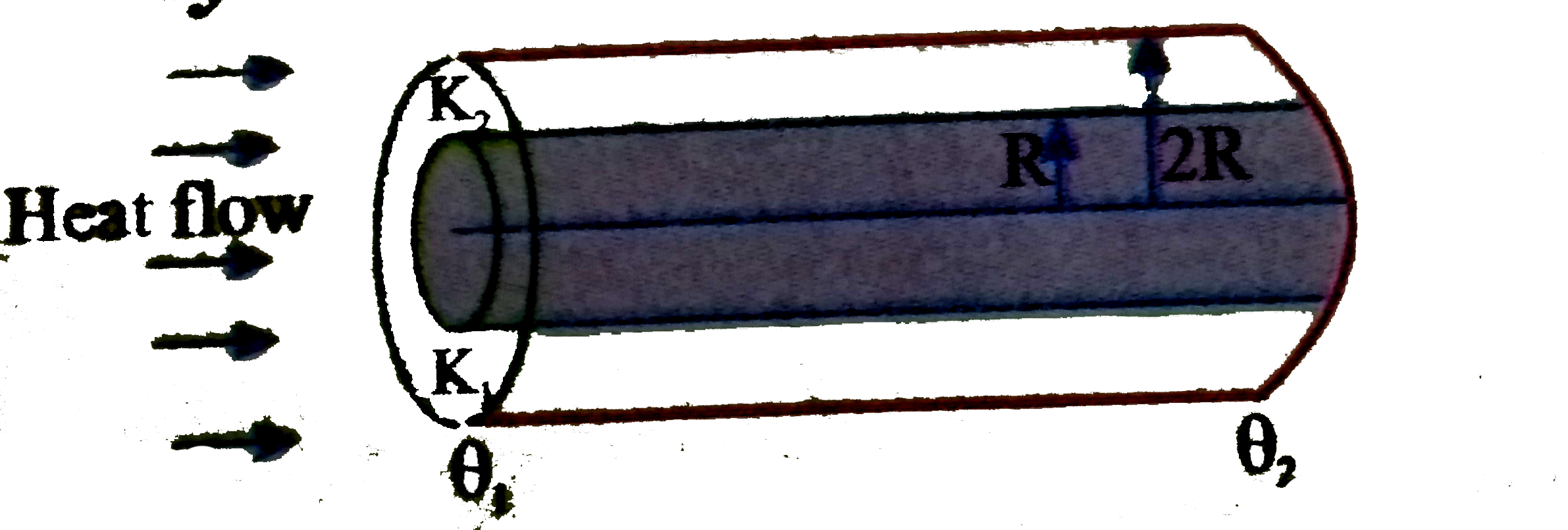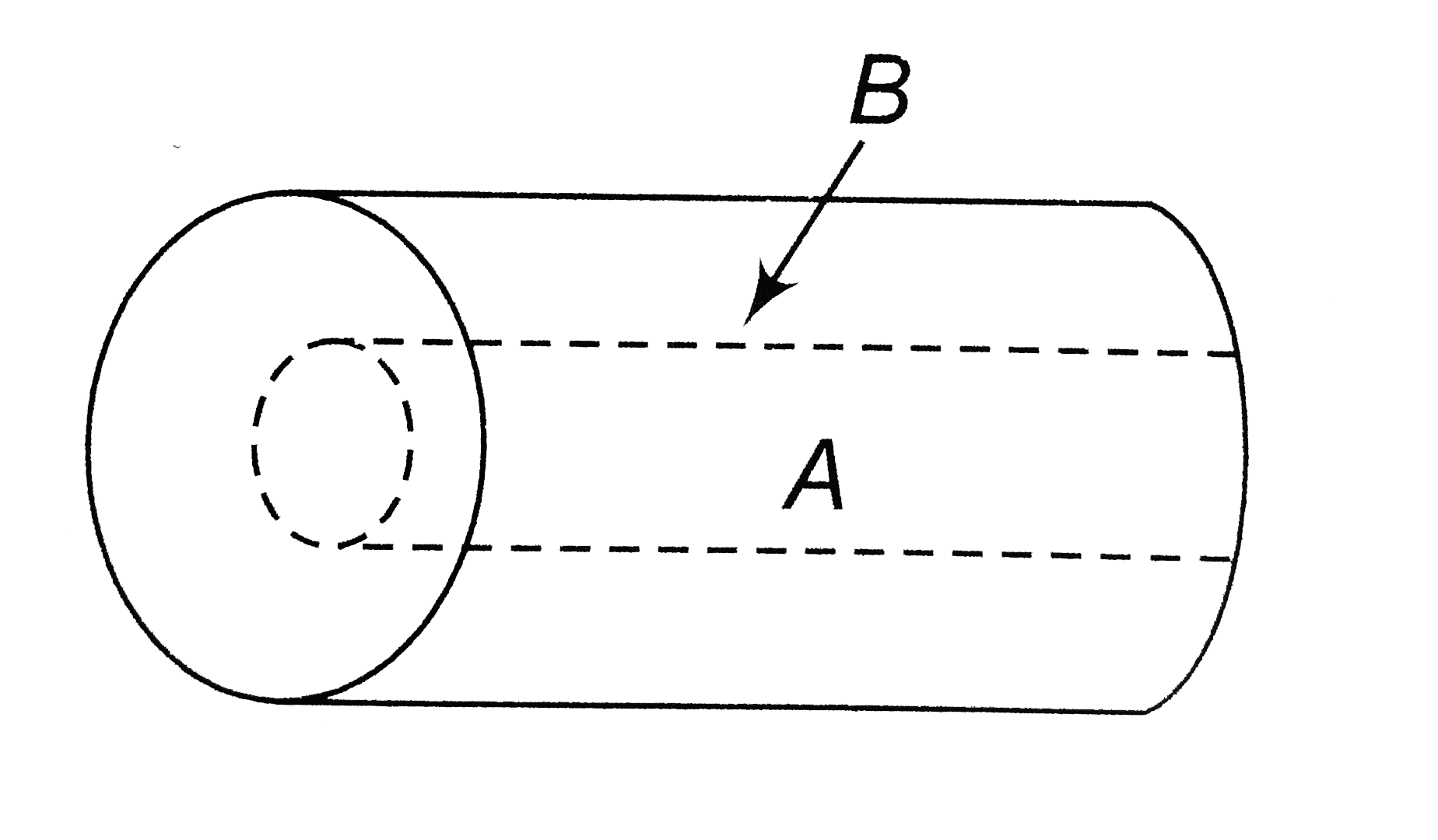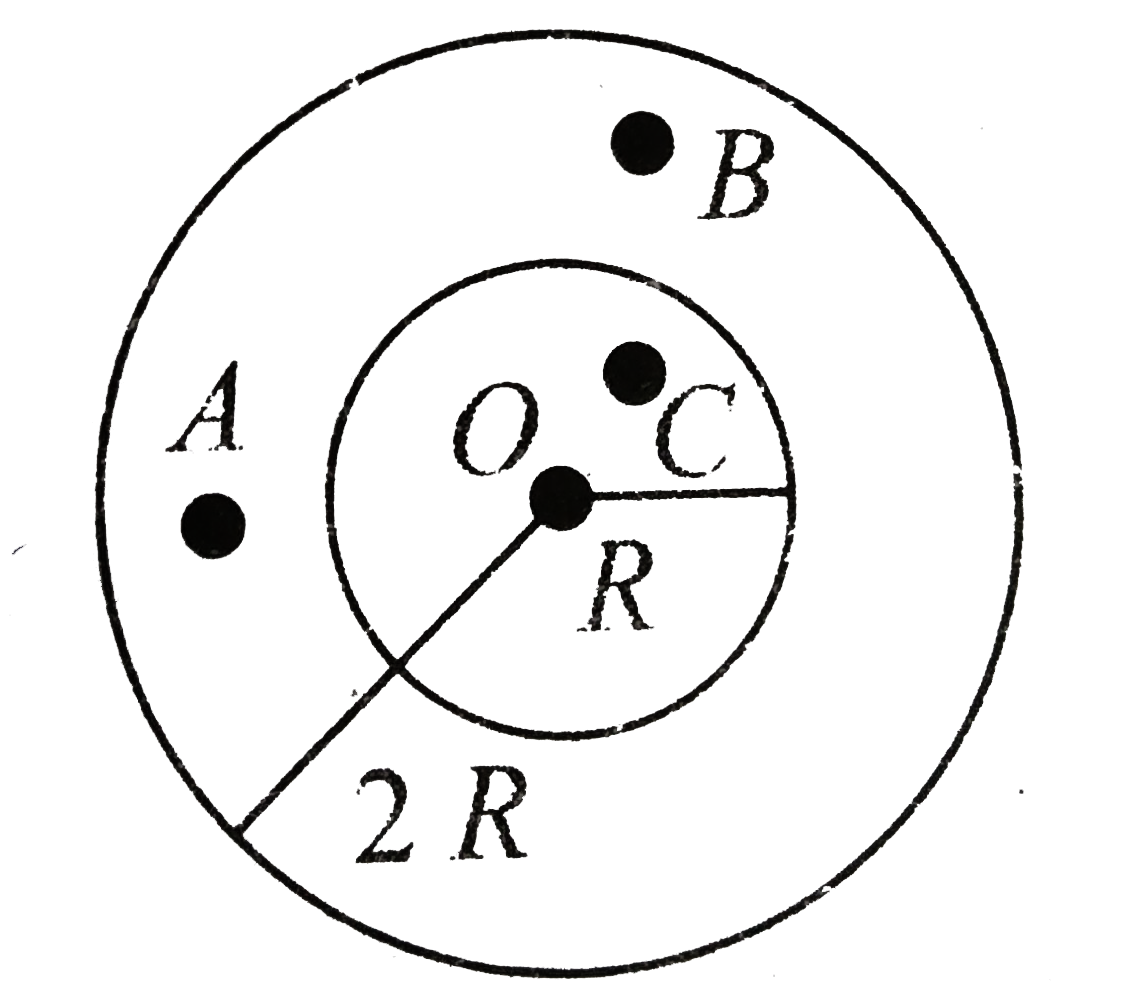A cylinder of radius R is surrounded by a cylindrical shell of inner radius R and oputer radius 2R. The thermal conductivity of the material of the inner cylinder si k1 and that of the outer cylinder is K2 ,Assumming no loss of heat , the effective thermal conductivity of the system for heat flowing along the length of the cylionder is :
K1+K22
K1+K2
2K1+3K25
K1+3K24
To solve the problem of finding the effective thermal conductivity of a system composed of an inner cylinder and an outer cylindrical shell, we can follow these steps:
Step 1: Understand the Configuration
We have:
- An inner cylinder with radius R and thermal conductivity k1.
- An outer cylindrical shell with inner radius R and outer radius 2R with thermal conductivity k2.
Step 2: Determine the Areas
1. Area of the inner cylinder (A1):
A1=πR2
2. Area of the outer cylinder (A2):
The area of the outer cylinder is the area of the annular region between the inner radius R and outer radius 2R:
A2=π(2R)2−πR2=π(4R2−R2)=3πR2
Step 3: Apply Fourier's Law
According to Fourier's law, the heat flow through each cylinder can be expressed as:
- For the inner cylinder:
I1=k1A1ΔTL
- For the outer cylinder:
I2=k2A2ΔTL
Step 4: Total Heat Flow
Since both cylinders are in parallel, the total heat flow I is given by:
I=I1+I2=k1A1ΔTL+k2A2ΔTL
Step 5: Factor Out Common Terms
Factoring out the common terms:
I=ΔTL(k1A1+k2A2)
Step 6: Define Effective Thermal Conductivity
Let the effective thermal conductivity be keff. Then we can express the total heat flow in terms of keff:
I=keffAeqΔTL
where Aeq is the equivalent area, which is the area of the outer cylinder:
Aeq=π(2R)2=4πR2
Step 7: Equate and Solve for keff
Equating the two expressions for I:
keffAeqΔTL=ΔTL(k1A1+k2A2)
Canceling ΔTL from both sides gives:
keff⋅4πR2=k1⋅πR2+k2⋅3πR2
Dividing by πR2:
keff⋅4=k1+3k2
Thus, we find:
keff=k1+3k24
Final Answer
The effective thermal conductivity of the system is:
keff=k1+3k24
We have:
- An inner cylinder with radius R and thermal conductivity k1.
- An outer cylindrical shell with inner radius R and outer radius 2R with thermal conductivity k2.
1. Area of the inner cylinder (A1):
A1=πR2
The area of the outer cylinder is the area of the annular region between the inner radius R and outer radius 2R:
A2=π(2R)2−πR2=π(4R2−R2)=3πR2
According to Fourier's law, the heat flow through each cylinder can be expressed as:
- For the inner cylinder:
I1=k1A1ΔTL
- For the outer cylinder:
I2=k2A2ΔTL
Since both cylinders are in parallel, the total heat flow I is given by:
I=I1+I2=k1A1ΔTL+k2A2ΔTL
Factoring out the common terms:
I=ΔTL(k1A1+k2A2)
Let the effective thermal conductivity be keff. Then we can express the total heat flow in terms of keff:
I=keffAeqΔTL
where Aeq is the equivalent area, which is the area of the outer cylinder:
Aeq=π(2R)2=4πR2
Equating the two expressions for I:
keffAeqΔTL=ΔTL(k1A1+k2A2)
Canceling ΔTL from both sides gives:
keff⋅4πR2=k1⋅πR2+k2⋅3πR2
Dividing by πR2:
keff⋅4=k1+3k2
Thus, we find:
keff=k1+3k24
The effective thermal conductivity of the system is:
keff=k1+3k24
Topper's Solved these Questions
Similar Questions
Calculated thermal conductance for radial flow of a spherical sheel of inner and outer radius r1and r2. Assume that thermal conductivity of the material is K
View SolutionA cylinder of radius R made of a material of thermal conductivity K1 is surrounded by cylindrical shell of inner radius R and outer radius 2R made of a material of thermal con-ductivity K2 The two ends of the combined system are maintained at two differnet tem-peratures There is no loss of heat across the cylindrical surface and system is in steady state What is the effective thermal conductivity of the system
 .
.
View Solution
Knowledge Check
A cylinder of radius R made of material of thermal conductivity K1 is surrounded by a cylindrical shell of inner radius R and outer radius 3R made of a material of thermal conductivity K2. The two ends of the combined system are maintained at two different temperatures. What is the effective thermal conductivity of the system ?
AK1+K2BK1+8K29CK1K2K1+K2D8K1+K29A copper cylindrical tube has inner radius a and outer radius b. The resistivity is ρ. The resistance of the cylinder between the two ends is
Aρlb2−a2Bρl2π(b−a)Cρlπ(b2−a2)Dπ(b2−a2)ρlA cylinder A of a material of thermal conductivity K1 is surrounded by a cylindrical shell of inner radius equal to the cylinder. The shell is made of a material of thermal conductivity K2. The two ends of the combined system are maintained at two different temperature. if the effective thermal conductivity of the system is 4K1+5K29, find the rate of outer radius of the shell to the radius of the cylinder.
 A2.0B5/2C5/3D3/2
A2.0B5/2C5/3D3/2
A cylinder of radius R, made up of a material (thermal conductivity k1) is surrounded by a cylindrical sheet of inner radius R and outer radius 2R (thermal conductivity k2). The two ends of the combined system are maintained at two different temperatures. There is no loss of heat across the cylindrical surface and the system is in steady state. Calculate the effective thermal conductivity of the system.
View SolutionA cylinder of radius R made of a material of thermal conductivity K1 is surrounded by a cylinderical shell of inner radius R and outer radius 2R made of a material of thermal conductivity K2. The two ends of the combined system are maintained at two different temperatures. There is no loss of heat across the cylindrical surface and the system is in steady state. The effictive thermal conductivity of the system is
View SolutionA cylinder of radius R made of a material of thermal conductivity K1 is surrounded by a cylindrical shell of inner radius R and outer radius 2R made of a material of thermal conductivity K2. The two ends of the combined system are maintained at two different temperatures. There is no loss of heat across the cylindrical surface and the system is in steady state. The effective thermal conductivity of the system is
View SolutionA hollow conducting sphere of inner radius r and outer radius 2R is given charge Q as shown in figure, then the

View SolutionA point charge q is placed inside a conducting spherical shell of inner radius 2R and outer radius 3R at a distance of R from the center of the shell. Find the electric potential at the center of the shell.
View Solution
